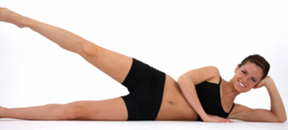Stretching is important to keep the body limber, relaxes the body and mind, keeps circulation going, and also helps release toxins. But with all the benefits, is there a “right” time and “right” way to stretch? Here are some popular myths and the truth behind them…
1. Myth: Stretching one particular muscle (or group of muscles) will only relieve that area, hence the reason for LOTS of different stretch moves.
Every muscle in your body is connected— have you ever heard to relieve a headache, put pressure on the fleshy part of your hand at the base of your thumb? It works! But back to stretches…stretching one area will be beneficial to multiple different areas because things in our bodies are so interconnected. Don’t have a lot of time for stretching? Pick a few different moves and rotate through them regularly.
2. Myth: Stretching a few times a week is more than enough.
Consistent stretching is important to maintain the benefits. Think of your body like a rubberband— stretch it out every now and then, it will tighten right back up. Stretch it regularly and, over time, it will sustain the loose flexibility.
3. Myth: Stretching after a workout isn’t important, as long as you stretched beforehand.
Actually, the post-workout stretch is just as important as your pre-workout stretching. It’s a soothing way to cool-down your muscles thoroughly.
4. Myth: Stretching isn’t important if you’re already flexible.
False. Stretching and warming up muscles are important for anyone with blood flow. (So…everyone.) Like we talked about earlier, stretching increases blood flow and helps the body release toxins. If basic stretches are too easy, push on to some more advanced moves.
5. Stretching (or not) has no effect on performance.
Flexible muscles improve your body’s range of motion, which means you can DO more stuff. Have you ever simply reached for something and felt a painful strain in a muscle? You were reaching beyond your ‘range of motion’.
The key is to start slowly, easing into the movement or position. Although you should feel some strain when you stretch, your muscles should still be comfortable and not in any sharp pain. Try not to bounce in the position or move too quickly— this gives your muscles no time to ‘stretch’, but instead forces them into the ‘finished position’, which defeats the purpose.


